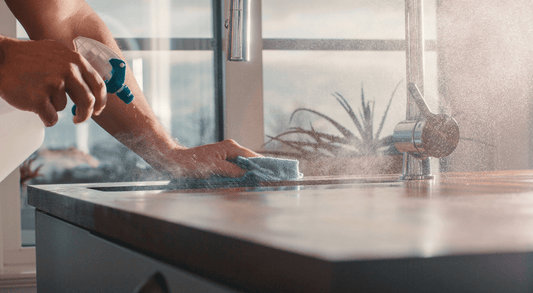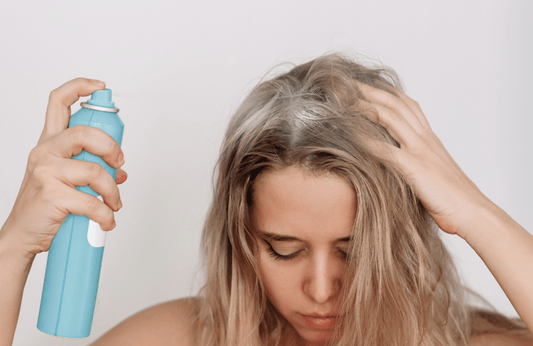Dreaming of selling your own cosmetic products?
Whether you want to start a cosmetics business or you’re just looking for a side hustle, we’re here to guide through it!
We already know you have incredible creative ability, so let’s make sure you also understand the technical side to selling cosmetics.
So where do we start?
Contents
Starting a Cosmetics Business
Before we go into the technical side of things, let’s make sure you are 100% ready to sell your cosmetic products.
At the end of the day, the most important part of your cosmetics company is the product.

Does Your Product Stand Out?
There are hundreds of the same product for sale in this industry. So really make sure your product is unique and speaks to your target market.
How can you make it stand out?
Try to speak to a specific group of people. Is your product vegan, organic or 100% natural? Is your haircare product for specific hair types? Is your skincare for aging skin, or acne prone skin?
Refine Your Recipe!
You need to be confident your product is exactly the way you imagined, or better.
Test, test, test! Whether your friends and family have tried your products or you are testing it yourself, make sure it is perfect! (You don’t need a CPSR to give away cosmetic products, so giving them to friends or family for free is fine!)
When you get to the technical details, like CPSR assessments, there’s no going back. If you find something wrong with your recipe afterwards, it'll be difficult and expensive to change!
What Does Your Packaging Look Like?
The way you package your product is going to be an important part of your brand. Is it eye-catching or aesthetically pleasing? Does it stand out? Think about what makes your brand unique and try to express that through your packaging.
But more importantly, is your packaging suitable for your cosmetic product?
To start, will the product break in transit? If your company is all about sustainability, make sure all of your packaging is sustainable! If your products are certified organic, there will be separate packaging regulations.

What to do Before Selling Cosmetic Products
Unfortunately, you can’t start selling your cosmetic products until you’ve completed the technical side of things. I know it’s not as fun as making the products, but everyone has to do it.
So what exactly do you need to do?
1. Labelling
Check your labels have all of the required information on them. If you are making any claims that the product has a certain function, you have to be able to provide scientific evidence.
That includes small claims like whether a product is moisturising, to bigger claims like a product having UV sun protection. The level of scientific evidence you have to supply will depend on how big the claim is.
So don’t go making claims you can’t back up!
Here is a list of what you need to include on your product label:
- Name and address of the Responsible Person
- Country of origin if the product is imported to the UK
- Product weight or volume
- The best before date or expiry date of the product or (where the minimum durability is more than 30 months) a ‘Period After Opening’
- Warning statements and precautionary information
- A batch number
- The product function, when not obvious from its packaging
- List of ingredients
- Product allergens (if it includes fragrance or essential oils)
We recommend not printing all of your labels out until your CPSR assessment has been done. Just in case there is anything they say you need to add to the label!
2. Restrictions
You need to know exactly what ingredients are in your cosmetic product, including hazardous ingredients or nanomaterials.
Some of the more common restricted ingredients are:
- Fragrance or essential oil (If you use too much of these in a recipe, it will not be suitable for use. Every oil has a limit defined by IFRA, so check this before finalising a recipe)
- Colours (If the colours don’t have CI numbers, then you can’t use it!)
You may need to change your recipe if it does contain any restricted products. Make sure this is done before you send the product for its CPSR assessment otherwise it will fail.

3. Cosmetic Product Safety Report
Now your product has been perfected, you are ready to do a CPSR assessment.
A cosmetic product safety report (CPSR) must be done before you can legally sell cosmetics to customers.
Your finished recipe is tested by a professional to ensure it is safe to use and to check it complies with the safety requirements of the Cosmetic Product Regulation.
What Information Do You Need to Get a CPSR Assessment?
You will need to submit a copy of your labels, submit your recipe and tell them how the product will be packaged.
You also need to make sure you have the technical documents for all of the ingredients in your product.
You will need a COA (Certificate of Analysis) and MSDS (Material Safety Data Sheet) for every product. For any essential oils or fragrance oils you may need an IFRA document (International Fragrance Association) and/or Allergen documents.
Even if your supplier has already had the ingredients assessed, you still need to get your own assessment.
The safety assessor will let you know if an additional challenge test (for preservatives) or stability testing needs to be done. This usually applies to products with water in them (but not soaps or bath bombs!)
What Products Need a CPSR Assessment?
Any product you are selling for cosmetic use must have a CPSR assessment.
That includes soap, face/ body oils, lip balms, toners, scrubs, serums, moisturisers, face masks, cleansers, shampoo, conditioner, hair masks, hair oils, body butters, makeup, hand creams and more.
If you are not sure if your product needs a CPSR assessment, just ask yourself, is it a cosmetic? You don’t want to find yourself selling products illegally!

4. Notify the Office for Product Safety and Standards
Before your cosmetics can be sold, you must submit information on the cosmetic product to the office for product safety and standards (OPSS)
If a user of your cosmetic product has a reaction resulting in them being temporarily or permanently unable to carry out their day to day tasks, you must report this to the OPSS as a serious undesirable effect (SUE).
5. Comply with Good Manufacturing Practice
You must comply with ‘good manufacturing practice’ when manufacturing your cosmetic products.
As an individual person in your company, not every rule will apply to you. If you want to use a checklist stating only the relevant rules for you, you can use our printable checklist, or digital checklist (download our digital checklist to edit it).
We have also created a checklist with the full list of rules as a printable checklist and digital checklist (download our digital checklist to edit it).
Here’s are our checklists:

You need to complete this checklist for every batch of cosmetic products you make!
6. Do You Have a Product Information File?
A product information file (PIF) is a mandatory requirement for all cosmetics.
The PIF must contain:
- A description of the cosmetic product
- The cosmetic product safety report (CPSR)
- Show how good manufacturing practice has been followed (use our checklist!)
- Evidence for the cosmetic product’s effects
You must have a PIF document and ensure this is as up to date as possible.
7. Batch Records
You need to keep batch records for your ingredients and finished products, you’ll get in trouble if you don’t!
You need to log your batches so you can keep track of any issues with the ingredients and the finished products.
For example, if a product comes out different to usual, you can use your batch records to help track down which ingredient could be the culprit! Or in a more serious case, if your product is reported due to an issue, you must be able to provide your batch records for that product.
But how do you log batch records? We’ve created a digital batch sheet (download our digital checklist to edit it) for you! Or use our printable batch sheet:

Dispatch Records
You will also need to keep a record of what batches you are dispatching to your customers, if you are selling cosmetic products online.
If you find out a contaminated batch has been sent out to your customers, you can use this to figure out who it has already gone out to!
So how do you record this? Don't worry, we’ve created a document for you!
Use our digital document (download our digital checklist to edit it) or our printable document:

8. What Information Must be Available to the Public Upon Request?
You will need to be able to provide the below information, if a member of the public requests:
- List of ingredients in the product
- Amounts for any hazardous ingredients in the cosmetic product
- Data on undesirable effects and serious undesirable effects (SUEs)
Final Thoughts
Now I know that may have been a lot to take in, but don’t let it scare you off!
We know you have the passion and the drive to create something incredible! And, this industry needs entrepreneurs like you to create the next best cosmetic product.
Now you know what you need to do, it’s time to break into the world of cosmetics!
Continue Reading
Now you know how to sell your cosmetic products, why not continue reading?
- Not sure what skincare products you want to make? Take a look at our beginners guide to skincare!
- Want to make your own scrub? Try our sugar scrub recipe!
- Learn about the purity of natural oils with our rosehip oil purity blog!
- Is your business all about sustainability? Read about how our amazon butters are protecting the Amazon Rainforest!
Let us know what cosmetic products you want to sell in the comments!



